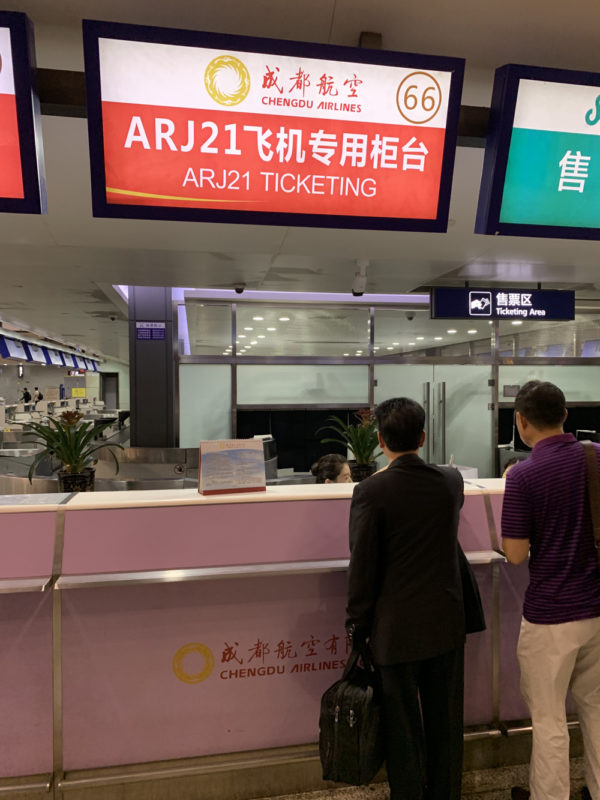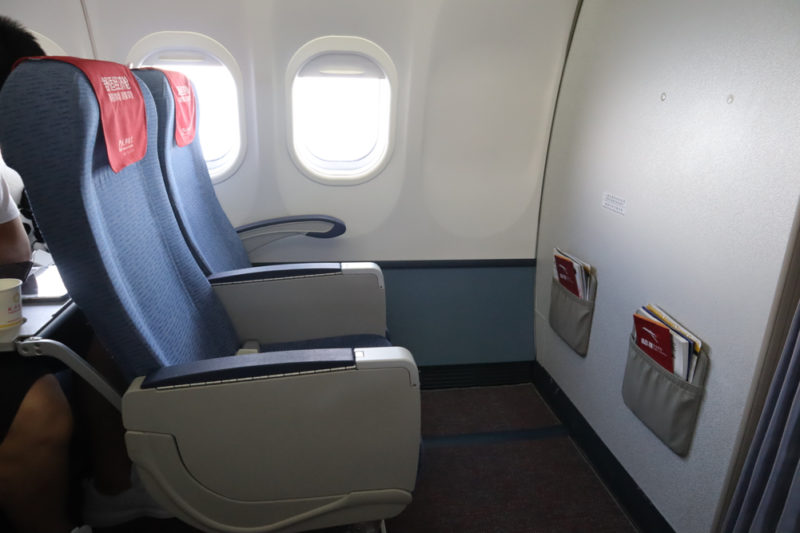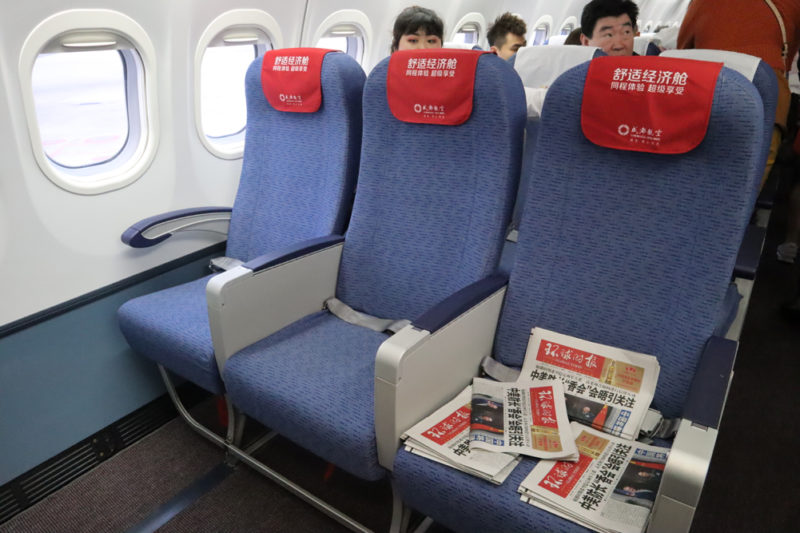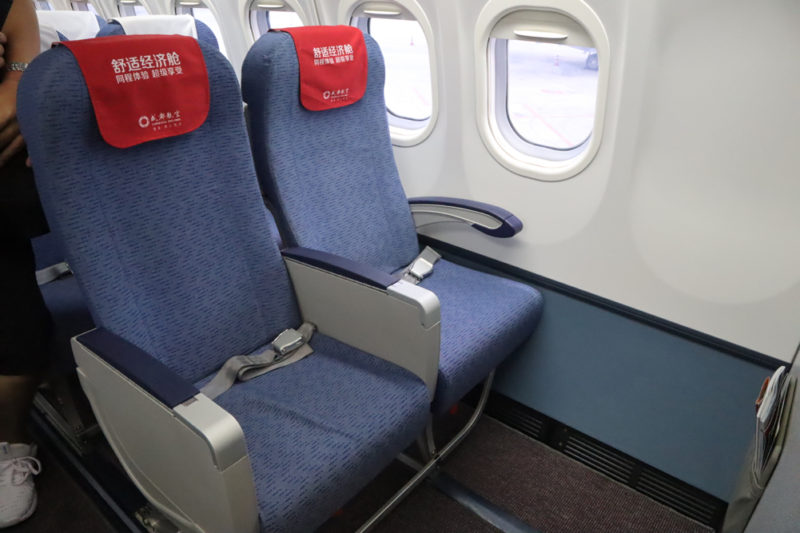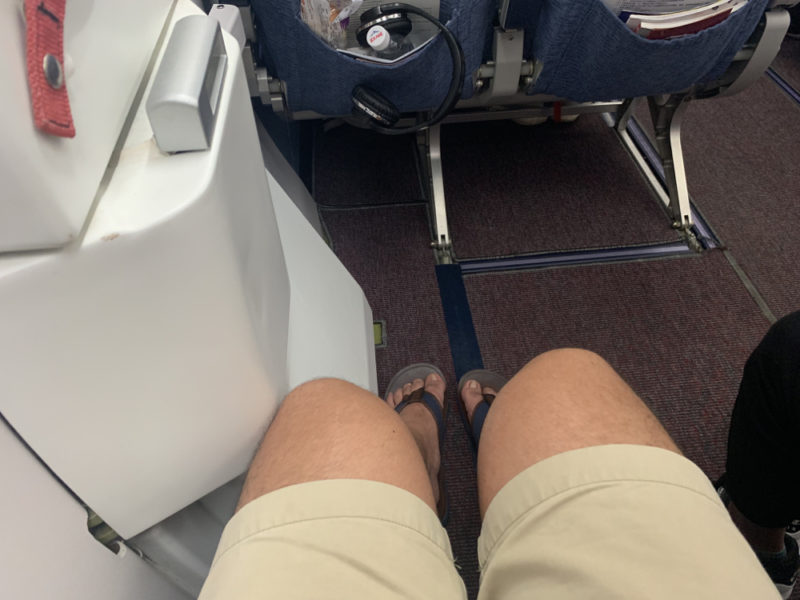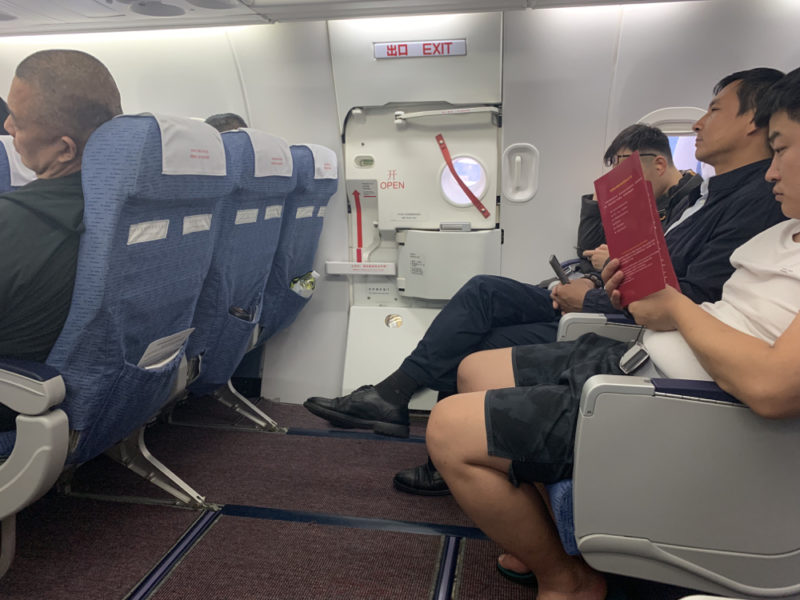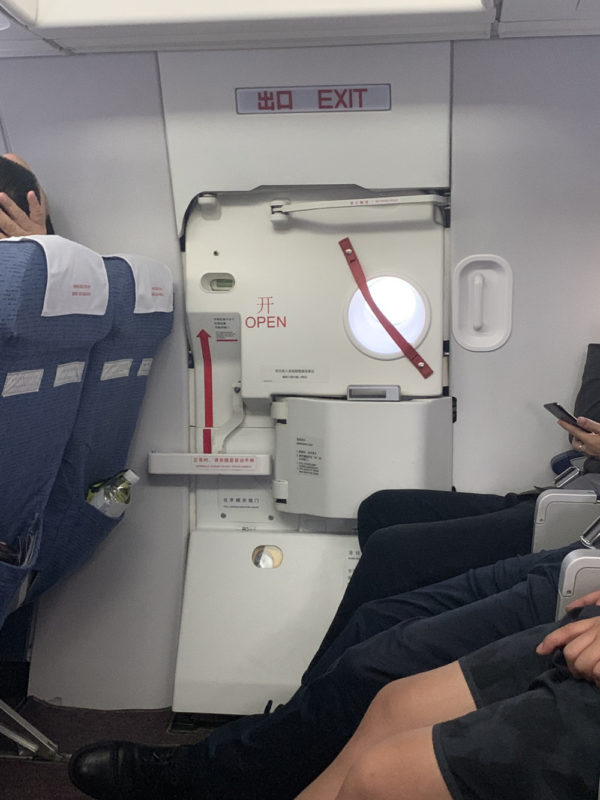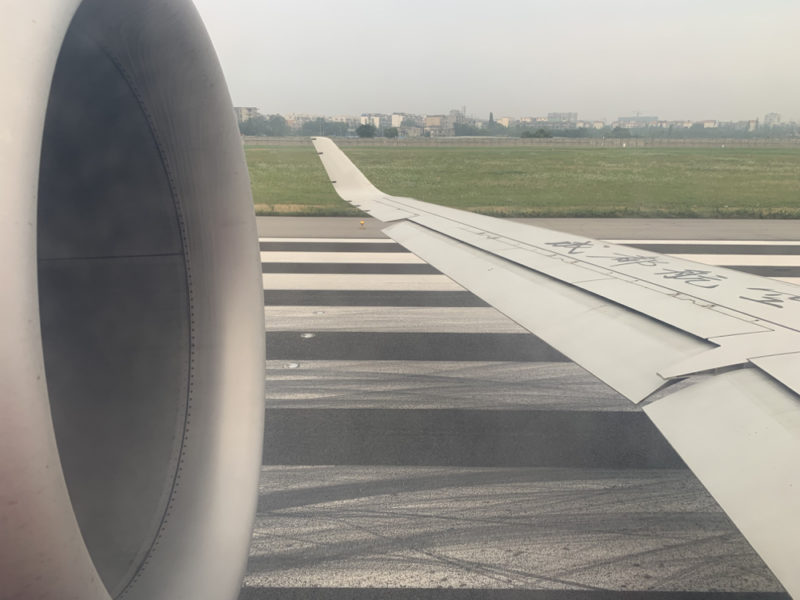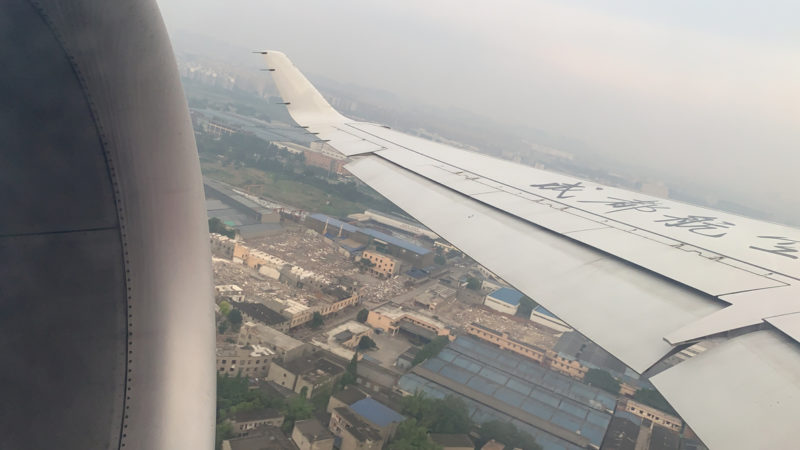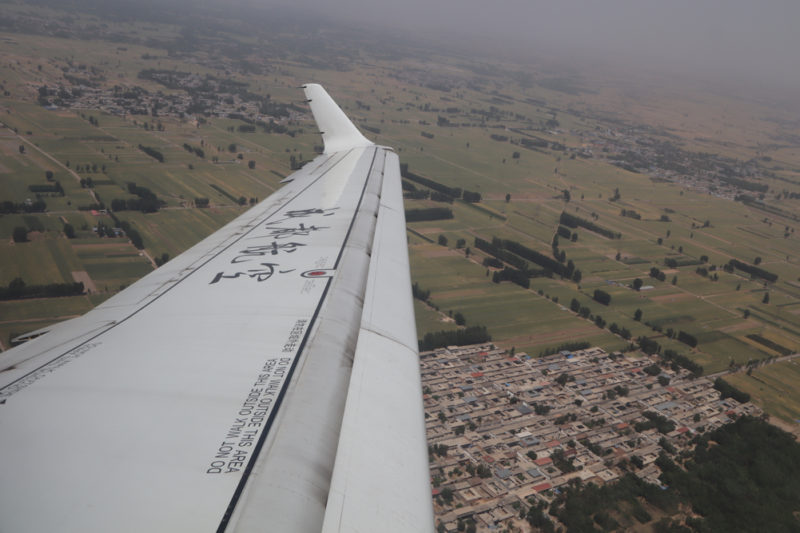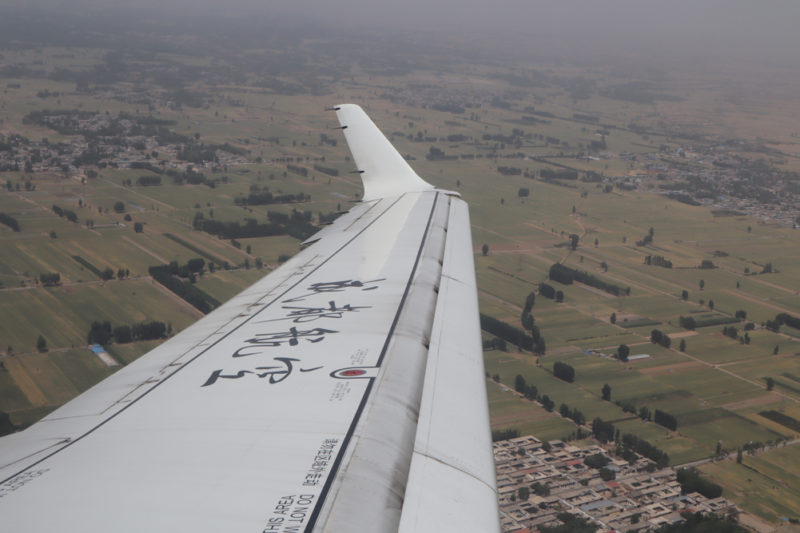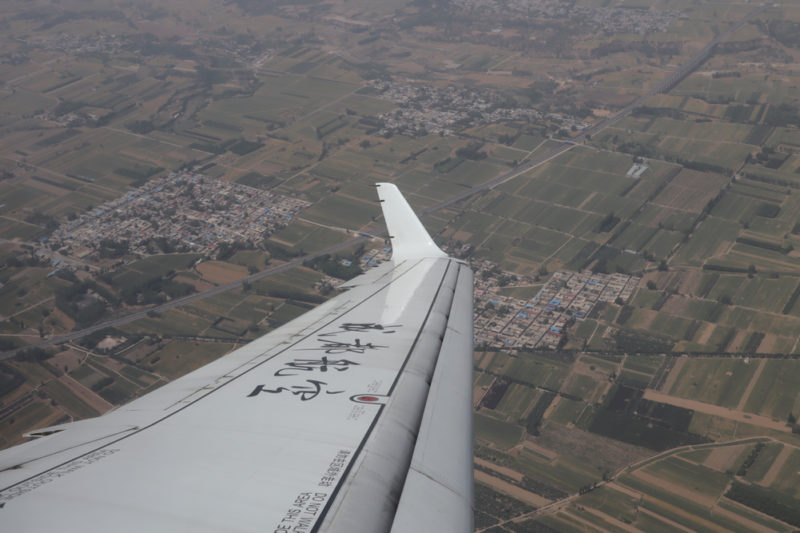The Comac ARJ21 is a twin-engine regional jet, manufactured by the Chinese aerospace company Comac. Chengdu Airlines is the inaugural operator of such types since mid 2016.
Currently Chengdu Airlines operates a fleet of 10 ARJ21-700 (and A319/A320) out of a base in Chengdu and Harbin. There are several scheduled flights per day out of Chengdu to such cities as Linfen, Harbin, Shangrao and Guiyang.
I flew the ARJ21 from Chengdu to Linfen, in Shanxi Province, and back on the same day. The same flight continues from Linfen to Harbin in the Northeast of China. Another ARJ21 flies in the opposite direction from Harbin to Chengdu via Linfen. Therefore a same day round-trip to Linfen and back on a ARJ21 is possible! A round trip ticket costs about 1,000 RMB and was purchased just a day before the flight on ctrip.com

At Chengdu Airport, there is a special ARJ21 ticketing counter. I was told that passengers who booked on an ARJ21 do not have to pay the mandatory 50 RMB airport construction fee (airport tax) as part of the supportive Chinese made air plane incentive.
The flight departure time was 6:35am. We were bussed out to the remote bay where several ARJ21's were parked. I used this opportunity to take some pictures before boarding. The exterior of the plane resembles a DC-9 or B717 or MD-87 with a winglet! Some say a mix of DC-9/MD-80 and CRJ!
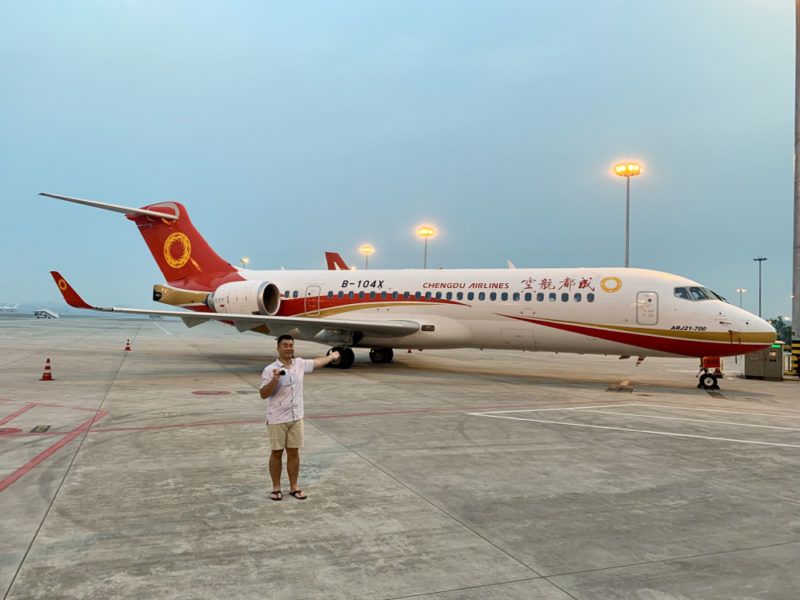
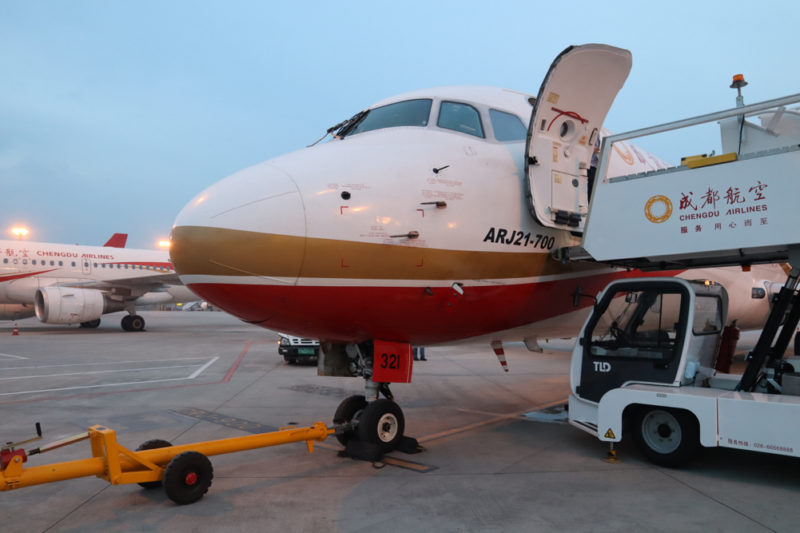

This ARJ21 has a total of 90 seats in a 3-2 seating configuration. It has a total of 18 rows.
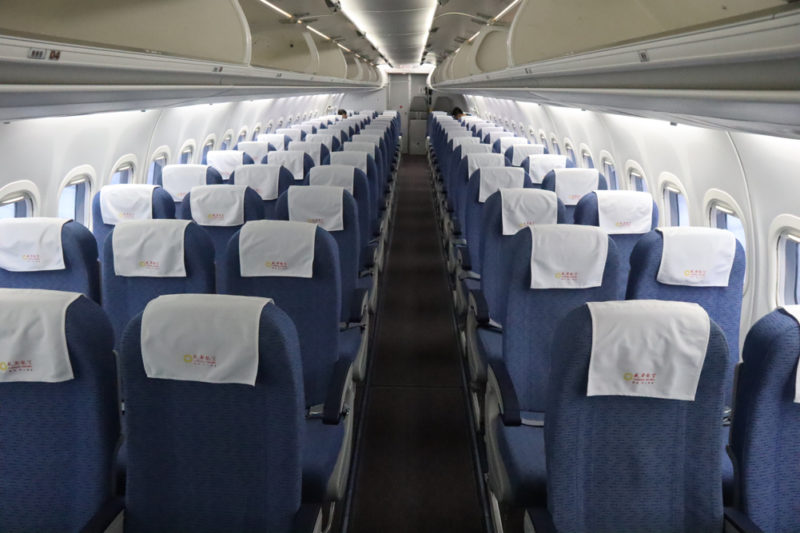
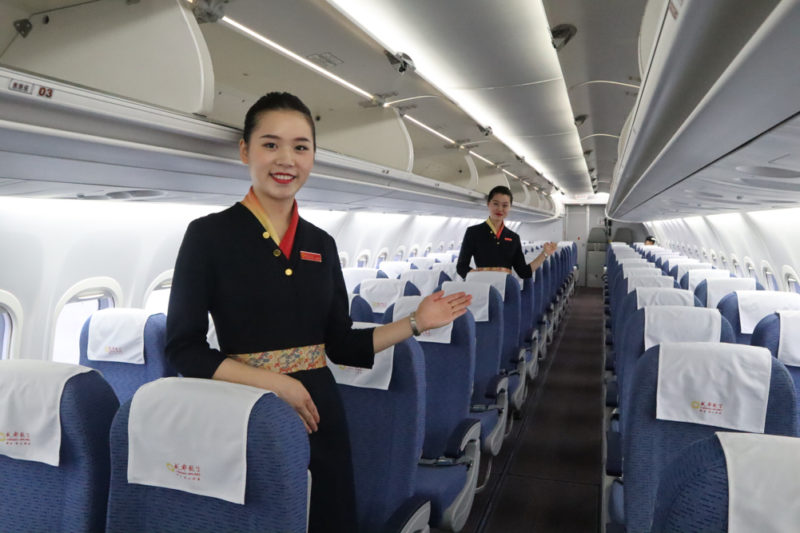
Row 1 has the best leg room. It is sold as Premium Economy while the rest are sold as Economy.
The registration of the plane is B-3321. It is the 5th ARJ21 built and the first one delivered to Chengdu Airlines. You can see the manufacture tag near the boarding door.
I was sitting in row 17A, which is an exit row with extra leg room. It also came with a good rear wing and engine view.
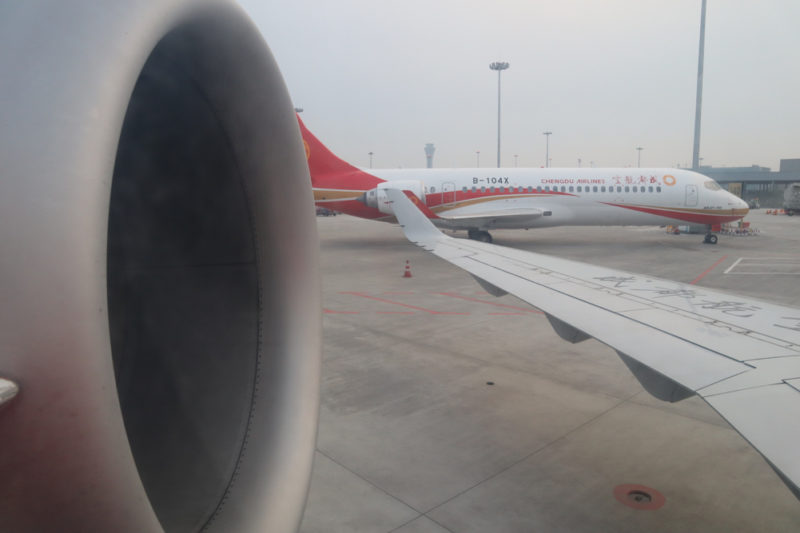
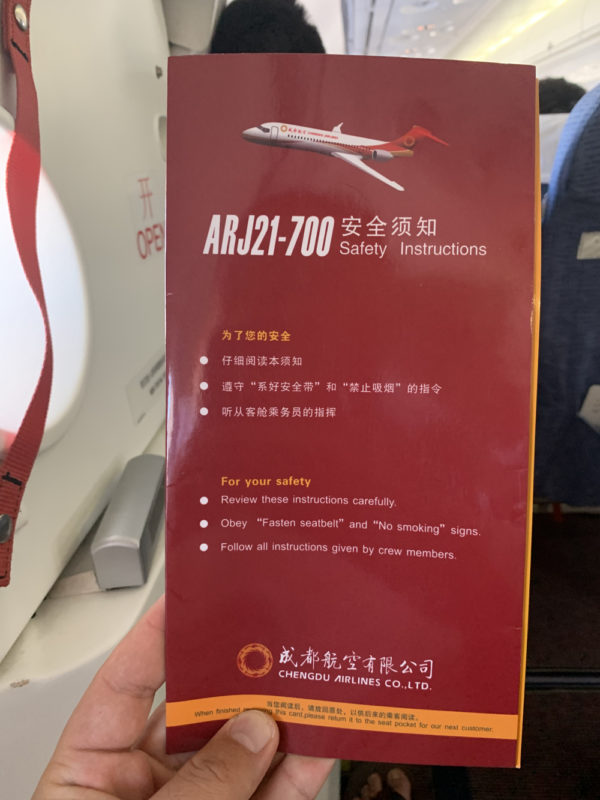
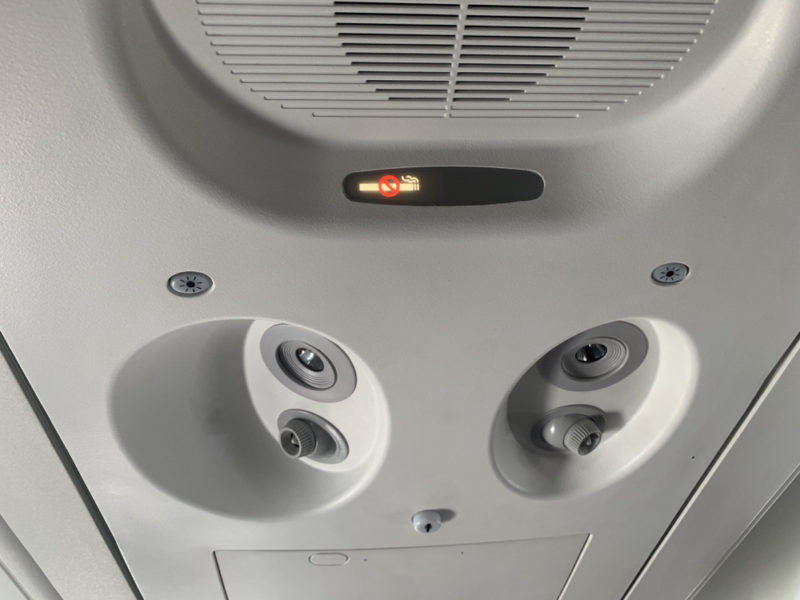
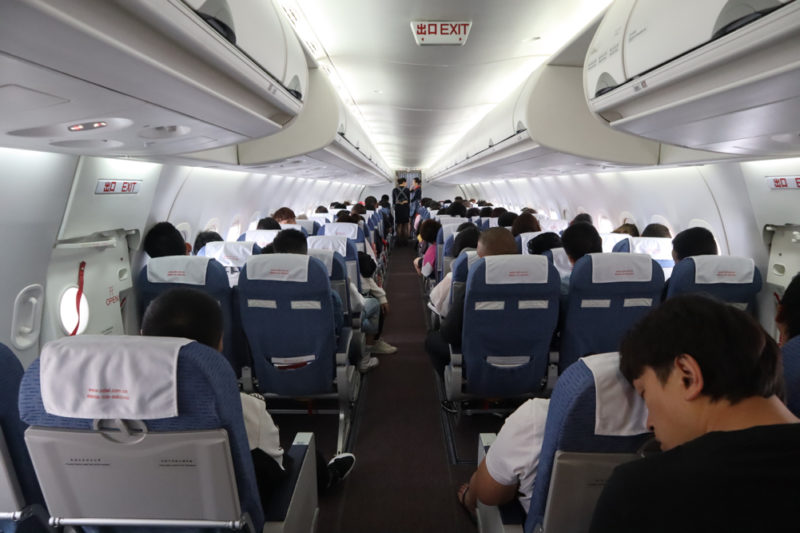
The ARJ21 has 2 rear mounted engines by GE, CF34-10. The takeoff took about 30+ seconds and the climb was quite shallow. It was noisy at the back seating near the engine. You can watch the takeoff recorded on the video below.
Video of ARJ21

After takeoff, a free breakfast was served with a choice of congee or minced chicken noodle. The congee was bland and came with Chinese pickles. The crew also came around to distribute hot red bean paste bread which was delicious.

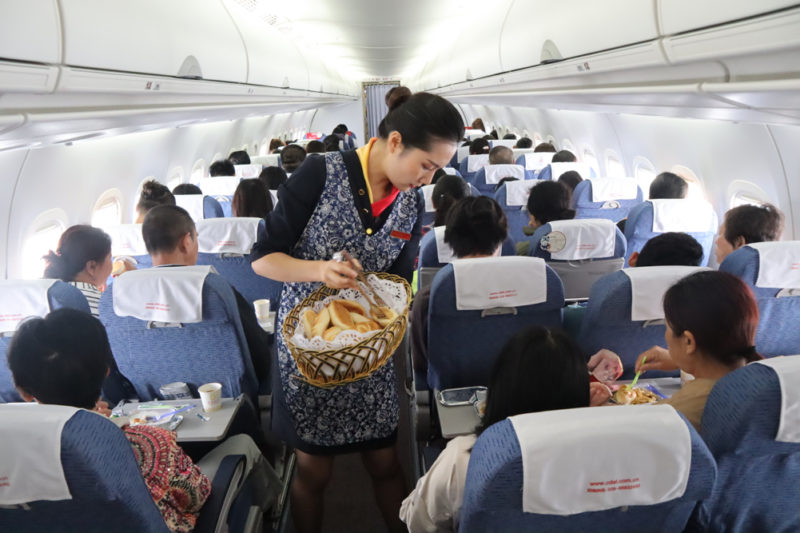

The flight itself was fairly routine and non-eventful. Here are a couple of observations on the ARJ21.
- The plane cruises at a rather low altitude, which is quite susceptible to weather. We had a high cloud ceiling and didn't climb over it. Our cruising altitude was around 25,000 ft only.
- The whole plane was noisy with the rear end even more noisy.
- Our cruising speed was around 800km/h, according to the pilot.
After 1.5 hours flight, we started our descent into Linfen. You can see the whole landing on video.


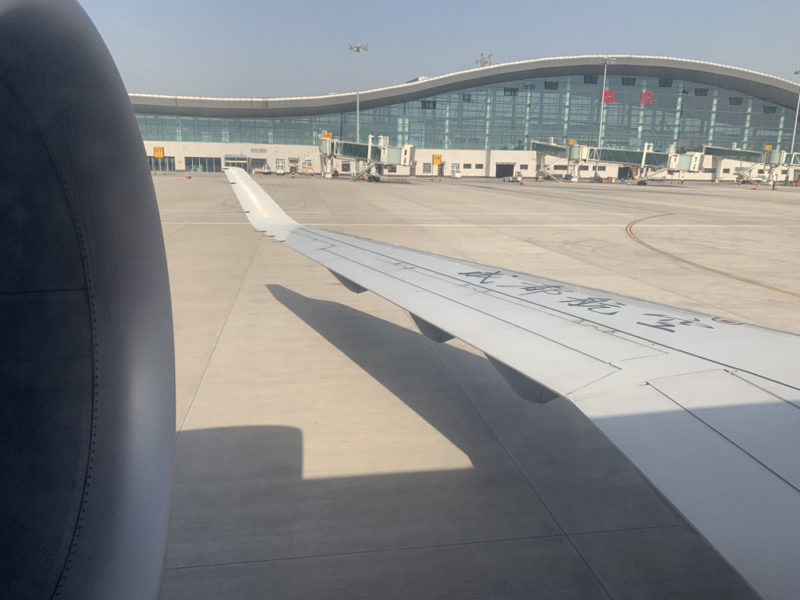
Linfen Airport seems brand new. It has about 2 dozen domestic flights calling into Linfen everyday. You can see the airport facility in my video.
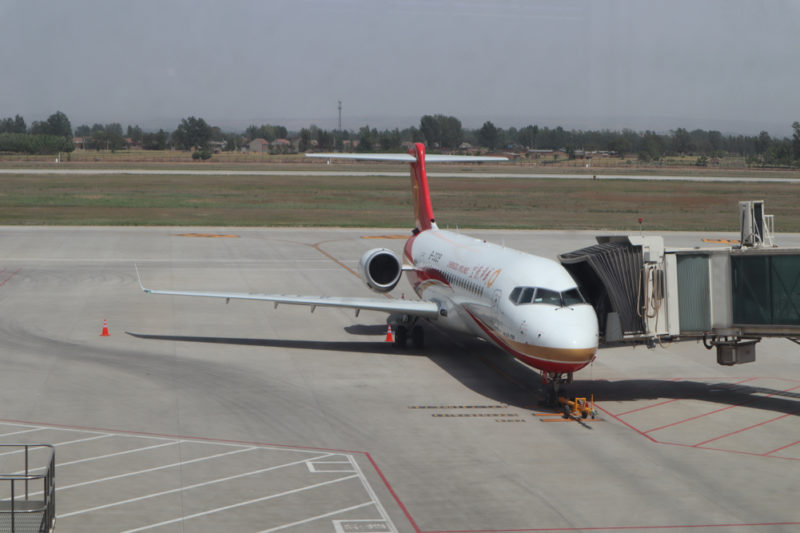
After a few hours in Linfen and visiting the nearby Hukou Waterfall, I caught the return flight on another ARJ21, registration B-3329 (a nearly new ARJ21 delivered to Chengdu Airlines) back to Chengdu.
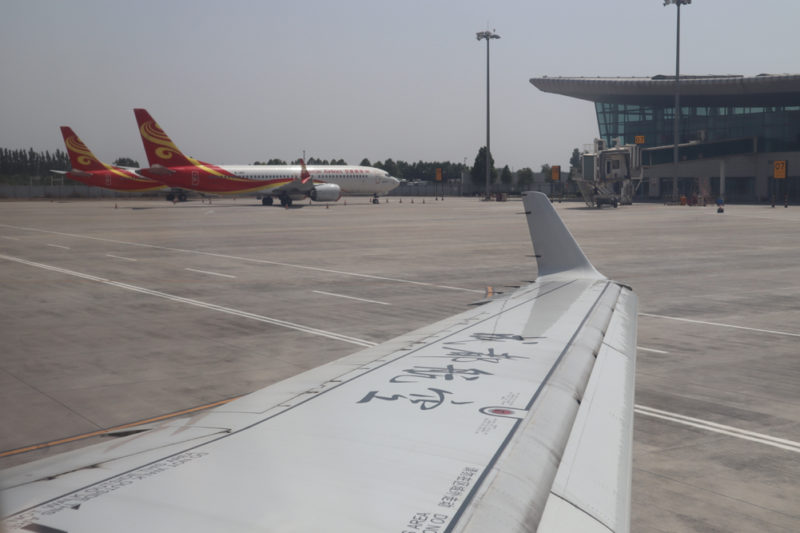
This time I sat at seat 9A which has a good forward wing view.
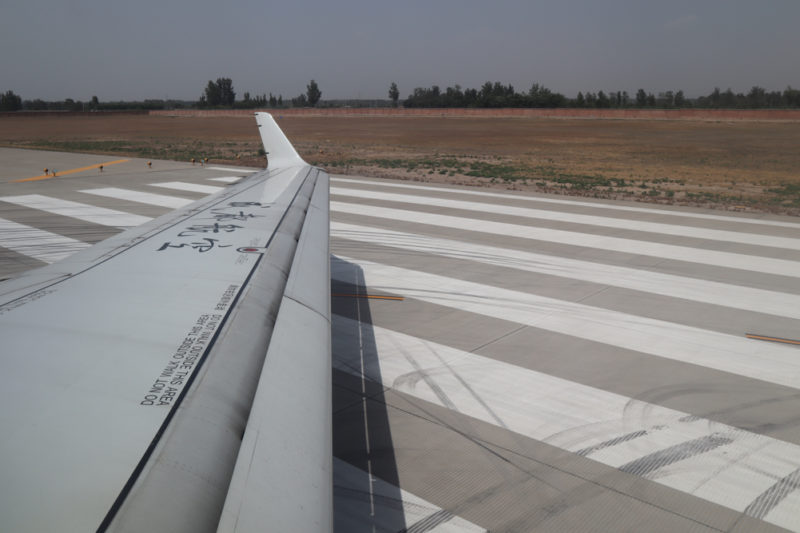
The flight was again non-eventful. Our cruising altitude was lower than on a B737 or A320 or any other regional jet. Apart from the noisy cabin, I don't feel much difference to a western built plane.
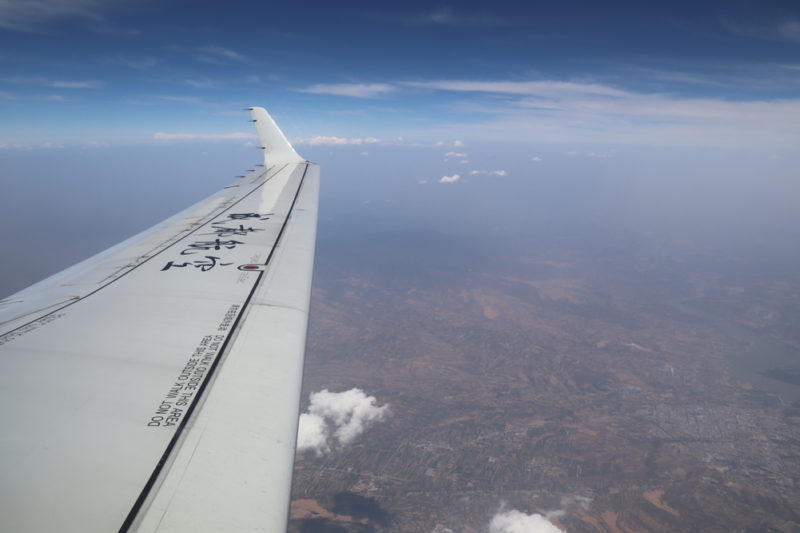
Verdict
It certainly was an interesting flight on the Chinese made ARJ21. This air plane is currently not certified by FAA or EASA so the overseas sales scope is limited. Currently 3 Chinese airlines operate the ARJ21; Chengdu Airlines, Urumqi Airlines from Xinjiang and Genghis Khan Airlines from Inner Mongolia. Development of the ARJ21 started in 2002, it spent 10+ years in design and testing which now makes the jet seem too small (and old?) for the fast growing Chinese market. Both of my flights were full. It seems to me that the ARJ21 is a learning experience for China to manufacture jets. Comac is now focused on a much larger 156 seater C919 to compete with western models, the likes of the A320/B737.
In terms of flying experience, it is quite similar to a Western built plane but the noise was considerably higher and a lower cruising altitude. When I asked about the air plane's ability to takeoff and land on wet runway, the captain informed me (on the video) it is standard procedure to avoid takeoff and landing in heavy rain in China regardless of the aircraft type.
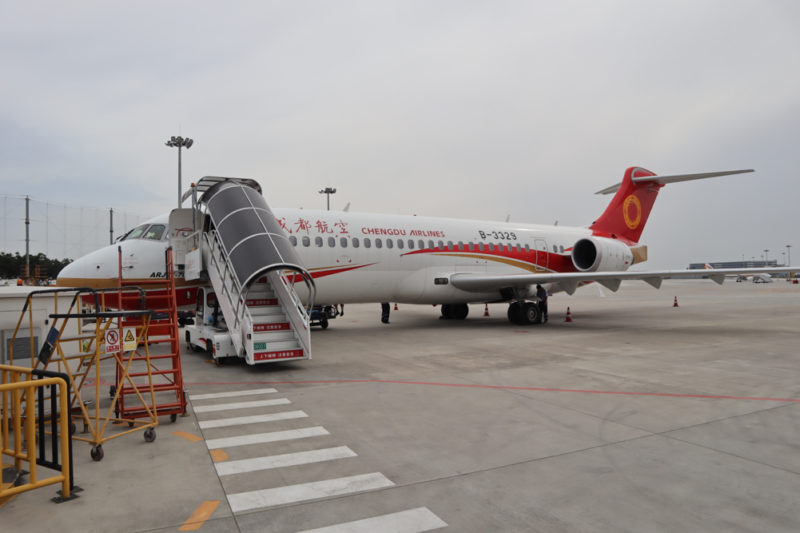
Video of ARJ21 flight
Design of the ARJ21
From Wikipedia page: Comac states that the ARJ21 is a completely indigenous design. The ARJ21's development did depend heavily on foreign suppliers, including engines and avionics from the United States. The ARJ21 features an all-new supercritical wing having a sweepback of 25 degrees and designed by Ukraine’s Antonov Design Bureau. It is fitted with winglets to improve aerodynamic performance.
Specification of ARJ21
| ARJ21-700 | |
|---|---|
| Cockpit crew | Two |
| Seating capacity | 90 (1-class) 78 (2-class) |
| Seat pitch | 31 in (1-class), 36 & 32 in (2-class) |
| Length | 33.46 m (109 ft 9 in) |
| Wingspan | 27.28 m (89 ft 6 in) |
| Wing area | 79.86 m2 (859.6 sq ft) |
| Wing sweepback | 25 degrees |
| Height | 8.44 m (27 ft 8 in) |
| Cabin width | 3.14 m (10 ft 4 in) |
| Cabin height | 2.03 m (6 ft 8 in) |
| Aisle width | 48.3 cm (19.0 in) |
| Seat width | 45.5 cm (17.9 in) |
| Typical empty weight | 24,955 kg (55,016 lb) |
| Maximum take-off weight | 40,500 kg (89,300 lb) STD 43,500 kg (95,900 lb) ER |
| Cargo capacity | 20.14 m3 (711 cu ft) |
| Take off run at Maximum takeoff weight | 1,700 m (5,600 ft) STD 1,900 m (6,200 ft) ER |
| Service ceiling | 11,900 m (39,000 ft) |
| Max. operating speed | Mach 0.82 (870 km/h, 470 kn, 541 mph) |
| Normal cruise speed | Mach 0.78 (828 km/h, 447 kn, 514 mph) |
| Range fully loaded | 1,200 NM (2,200 km; 1,400 mi) STD 2,000 NM (3,700 km; 2,300 mi) ER |
| Maximum fuel load | 10,386 kg (22,897 lb) |
| Powerplants (2x) | General Electric CF34-10A |
| Engine thrust | 75.87 kN (17,057 lbf) |



